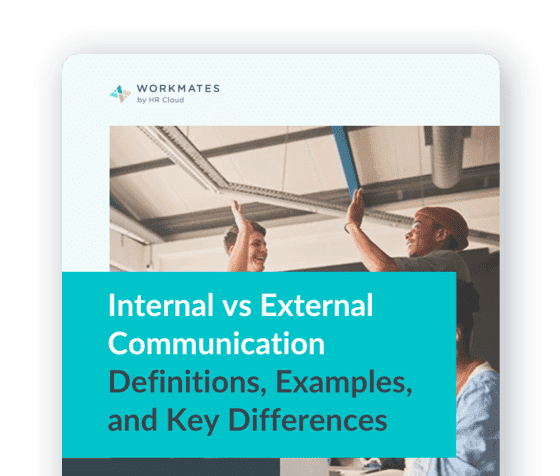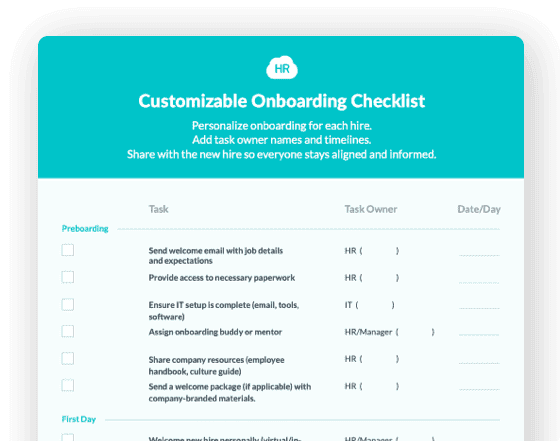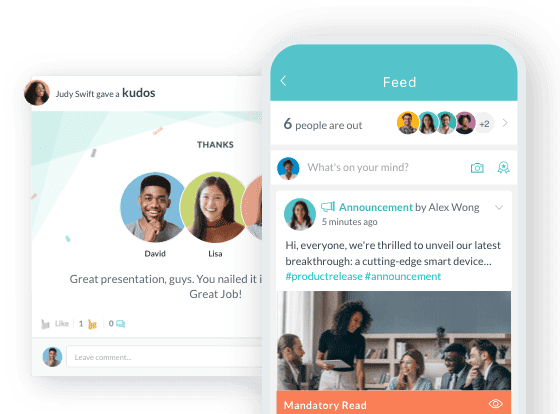

 Cut onboarding time
by 60%—here's the
Ultimate Checklist
that helped do it.
Cut onboarding time
by 60%—here's the
Ultimate Checklist
that helped do it.

We spend a lot of time discussing how to recruit and retain millennials, all while adjusting our management practices to accommodate flexibility in our work environment and attract great talent. This is great, but are we focusing enough attention on our aging workforce?
“Boomers” are no longer in retirement mode and are choosing to stay employed for many years to come, either at your company or with another that provides opportunity for continued growth and learning. What does this mean for HR and what should you be thinking about next?
1. Engagement
Older workers have a great deal of institutional knowledge and tend to hold a large number of senior leadership positions, making them ideal candidates for your competitors. Yes, this is true. If an older worker is not engaged with your organization, there’s no reason to think they’re going to stick around. Many still have the desire to push beyond the typical retirement age and continue to make a professional impact.
The cost to replace an older worker can be significant. Yet, many organizations are slow to focus on retention and hiring strategies. In a SHRM.org article we learn, “Employers should create proactive strategies to boost productivity, improve job satisfaction and increase long-term retention rates for older workers—and guard against disability-related charges.“ The key is continuous engagement—encouraging employee participation at all ages, supporting the desire to learn new skills, increasing flexibility, or dialing back responsibilities to reduce stress levels.
2. Accommodations
No one likes to be singled out for needing “special accommodations.” So, as the business environment changes, it’s important to assess the needs of your workforce. Scan your teams and departments. Find out what’s working and what needs to be replaced or revised. For example, is your sales team constantly toggling between screens, updating call lists and loading data into Excel spreadsheets? If so, this can be mind-numbing and cause errors. You might consider providing 2 desktop monitors instead of one. The work may flow more easily if the display of information is clearer and is able to be organized differently. This type of assessment benefits everyone and avoids singling out those who may need accommodations for larger displays or a more simple transition from one document to the next.
As you continue to assess your organization for necessary changes or updates, consider your training programs as well. Many times we find that training was implemented years ago and no one has bothered to refresh it. There may be new programs that you can offer to employees that will enhance their learning and close the skills gap found among all age groups. Don’t forget to review policies on flexible work arrangements, paid time off, and even health care options. Determine what makes sense to upgrade, change or get rid of altogether.
3. Include Everyone
Sounds easy, right? It is, if you have a culture of inclusion that embraces generational diversity and encourages employees to work with each other. One way to reinforce inclusion is to share knowledge across the board. This can be done through the traditional avenue of mentoring, while incorporating reverse mentoring. For example, in a USNews.com report, we learn that more senior employees can greatly benefit from sharing experiences and knowledge with those more junior. “In traditional mentoring, a seasoned executive might counsel a young up-and-comer about career development or leadership. However, a growing phenomenon called reverse mentoring (or reciprocal mentoring) gives entry-level, often tech-savvy employees the chance to school senior executives about business interests, such as trends in social media, consumer culture and unconventional methods to boost office morale.”
Sharing knowledge through mentoring encourages team work and collaboration. It opens the lines of communication across all employee groups and strengthens employee commitment to the team and to the organization as a whole.

Keep Reading
From Manual to Automated: A Complete Guide to Digitizing Employee Onboarding for Large Organizations
Sarah Chen, Director of HR at a 7,000-employee healthcare organization, starts her Monday
Enterprise HR Software in 2025: Why Traditional Enterprise Platforms Fall Short and What Actually Works
Traditional enterprise human resources software systems promise comprehensive solutions
AI in Onboarding: Complete Guide for 2026
You’ve probably been hearing this multiple times a day — AI is transforming HR. But
Like What You Hear?
We'd love to chat with you more about how HR Cloud® can support your business's HR needs. Book Your Free Demo

Build a Culture of Recognition. Boost Engagement. Guaranteed.
Workmates empowers employees to stay informed, connected, and appreciated—whether they’re on the front line, in the office, or remote. Recognition drives 12x higher engagement.Trusted by industry leaders in every sector




Cut Onboarding Costs by 60%.
Take the confusion and follow-ups out of onboarding with automated workflows, digital forms, and structured portals—so new hires ramp faster 3X quicker.Trusted by industry leaders in every sector






